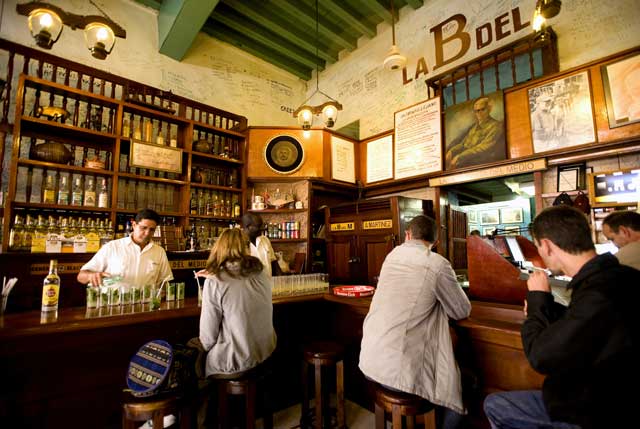Simon Calder: The importance of being visited by Ernest
The man who pays his way

The sad thing about dead celebrities is that they are no longer with us. Whatever you may think about, say, Michael Jackson, the pop singer enriched many lives.
The good thing about dead celebrities, from the perspective of some of those who wish to promote tourism, is that they are no longer with us. The deceased cannot complain about their name being taken in vain and applied liberally to everything from a cocktail to a yacht marina.
In Cuba, you sense that anything not named after the national hero, José Martí , is probably named for Ernest Hemingway, who took his own life 50 years ago today, long before he could become an old man of the sea. The writer might be amused that modern tourists begin evenings in the capital in the manner he prescribed – "My mojito in La Bodeguita", a Havana mainstay – but less enamoured of the ugly, modern Hemingway Marina, eight miles west of the city. This is the venue for the Ernest Hemingway Marlin Fishing Tournament, which "Papa" did endorse before his death in 1961.
The first post-revolutionary winner was none other than Fidel Castro. By the end of the Sixties, El Presidente must have thought it was Christmas (had he not abolished the festival). He had two dead heroes to mythologise: Che Guevara, to appease the masses, and Ernest Hemingway, to appeal to the tourists.
For the tourist, a literary narrative can enhance a journey, Chris Leadbeater tracks down Hemingway in Pamplona, earlier in his career (see related links).
By the time Hemingway hit Havana, he reserved his best writing for the love of his life: drink. At El Floridita, he describes double frozen daiquiris, "the great ones that Constante made, that had no taste of alcohol and felt, as you drank them, the way downhill glacier skiing feels running through powder snow and, after the sixth and eighth, felt like downhill glacier skiing feels when you are running unroped".
The bar has survived 50 years of communism in better shape than most of the city, partly by selling undiscerning tourists the "Hemingway Special" (an insipid concoction of rum, lime, grapefruit juice and maraschino).
Sleep off the double frozen daiquiris at the Ambos Mundos, the Old Havana hotel that seems to have spent most of its post-revolutionary life under renovation, but now once again exploits the memory of the man who was doing his level best to forget.
The next step on the Hemingway Trail takes you seven miles south west, to his former home in the suburb of San Francisco de Paula. Finca La Vigía (so named for the vigilantes who kept an eye on things from this hilltop) is now the Museo Ernest Hemingway – a moving tribute to the man who championed Cuba, and contains some of his original manuscript. Touchingly, on my first visit, it was closed because of rain; butpersevere to get a sense of the man who sorrowfully abandoned Cuba in 1960, the year before he shot himself in Ketchum, Idaho.
Final stop: the coastal village of Cojimar, the setting for Hemingway's Nobel Prize-winning The Old Man And The Sea. Gregorio Fuentes, the gnarled old sea captain, cashed in for decades afterwards, offering tourists increasingly wild yarns in return for dollars. He died in 2002 – but his legend lives on.
No cigar: how predictions for Cuba went up in smoke
Cuba's exploitation of literature for the purposes of its tourist industry is matched by the Western media's ceaseless harvesting of the island's fragile heritage.
The great broadcaster Andy Kershaw started it all, in 1994, with a Radio 4 documentary called Castro's Last Christmas?. With interviews with supporters of the "Socialism or Death" principle, and Cuban exiles in Havana, the programme asked how Fidel Castro's regime could survive following a collapse of communism elsewhere in the world.
Shrewd timing, I thought, given that the nation looked about as pallid as an East German postcard. But Kershaw's question mark turned out to be well judged.
I should have been equally cautious in 2003, for a story I wrote, that implored "Cuba – why you should go now". Surely, I argued, the US economic embargo must end, and the island transformed. It hasn't happened yet – but even the Castro brothers can't last forever. With the predictable flood of American visitors to the Caribbean's most beautiful island, socialismo o muerte will be replaced by Hemingway's dilemma: "mojito or daiquiri?".
travel@independent.co.uk
Join our commenting forum
Join thought-provoking conversations, follow other Independent readers and see their replies
0Comments